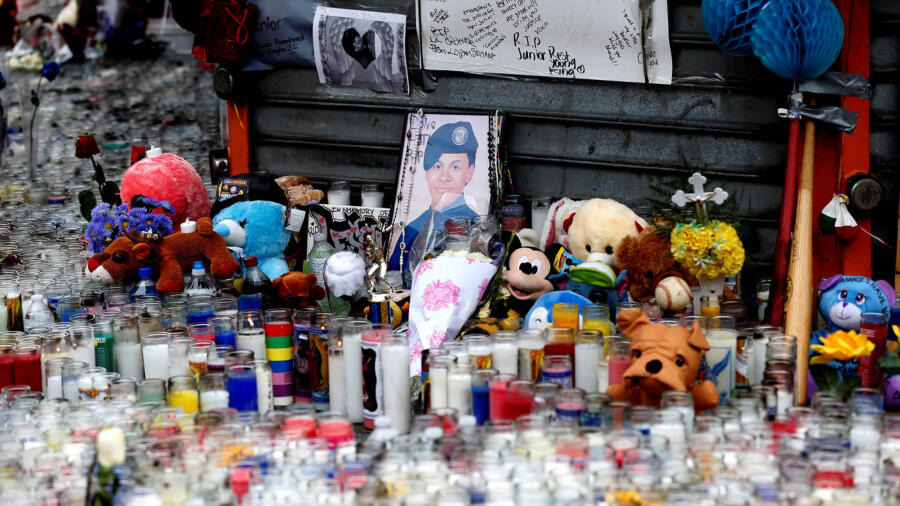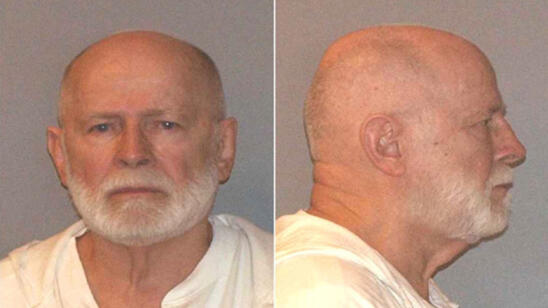Bronx teen Lesandro Guzman-Feliz hoped to one day grow up to be an New York Police Department detective. Instead, he fell victim to gang violence so savage that it put the city into a collective shock.
On June 20, 2018, Guzman-Feliz (known to family and friends as “Junior”) was dragged from the Cruz and Chiky bodega in the Belmont neighborhood of the Bronx by a group of men who stabbed him multiple times in the street with machetes and knives. The group—allegedly members of the Trinitarios gang—had mistaken Guzman-Feliz for another teen from the neighborhood, one who had put a sex tape on social media with a gang member’s sister.
After the stabbing, Guzman-Feliz, 15, ran back into the bodega seeking assistance and then walked himself to nearby St. Barnabas Hospital, where he collapsed and died.
In the immediate aftermath of the murder, the community has been vocal, not only about the gang violence, but about how shop owners and others in the line of fire should respond. A makeshift memorial sprang up: Thousands of votive candles filled the corner where the 15-year-old was attacked. People painted murals throughout the neighborhood: Junior among the clouds; Junior wearing angel wings; Junior wearing a jersey of the New York Yankees, his favorite baseball team. the NYPD responded to community outcry and an outpouring of tips by cracking down on those affiliated with the gang.
As of July 14, a dozen men between the ages of 18 and 29 had been arrested in connection with the murder.
And although the Trinitarios have been in New York City for decades, for many residents Guzman-Feliz’s murder served as a brutal introduction to their “brand.”
According to New York City Council Member Ritchie Torres, the group wasn’t something he’d been hearing about from his constituents prior to the teen’s public murder.
“The attack of Junior Guzman raised the profile of the Trinitarios,” says Torres. “I think you hear generally…about violence. But not about specific gangs.”
Where Did the Trinitarios Come From?
The Trinitarios formed in 1989 in a Bronx housing project near Christopher Columbus High School, according to a gang-violence intervention worker with Council for Unity who asked not to be identified by name because he’s not professionally permitted to make public statements about individual gangs.
According to the source, the gang was a spin-off of another group: Dominicans Don’t Play. A lot of gang members became affiliated with the Trinitarios in Sing Sing prison and Riker’s Island, as a way to gain protection while navigating the dangers of life on the inside.
“Gangs evolve from need,” he says. “If you have one gang, that’s one group of people; then there’s another group of people that’ll come up because they don’t want to be preyed on.”
But, for this summer at least, a Trinitarios streak of violence hardly comes across as “defensive.”
On June 18, just two days prior to Guzman-Feliz’s slaying, a 14-year-old boy was stabbed and critically wounded in the median strip of the Bronx River Parkway in a crime that police believe was committed by the same group. And on July 9, an inmate at Riker’s Island was choked to death, allegedly by Artemio Rosa, an alleged Trinitarios gang member.
And the Trinitarios are not limited to the Bronx. In 2013, then-U.S. Attorney for the Southern District of New York Preet Bharara sentenced several Trinitarios members for murder, racketeering and firearm offenses. At the time, Bharara said, “the Trinitarios street gang strangled pockets of Upper Manhattan…infesting neighborhoods with drugs and lethal violence.”
But despite its seemingly wide-ranging territory, the gang is a “decentralized network,” says Torres.
According to a recent New York Times article about the gang, a 2011 police database places the number of Trinitarios in New York City at 1,181, a relatively small portion of the 22,935 gang members on record. But membership has stayed consistent.
What do the Trinitarios do?
As with most gangs, there are strictly adhered to rituals within the Trinitarios. In some pockets of the gang, members attend mandatory weekly meetings, where they pay $5 in dues: The funds are channeled to bail for members, drugs, weapons, parties, prison commissary and everyday items like diapers, according to the Times.
The NYPD didn’t respond to inquiries from A&E True Crime as to the scope of the Trinitarios gang. However, Torres’s assertion is corroborated by New York City police strategy around gangs, namely “Operation Crew Cut,” a 2012 NYPD initiative that directed anti-gang efforts toward shutting down small “street crews” that often don’t occupy more than a single city block.
In New York, gangs like the Trinitarios are actually several independent groups of youth, all co-opting a single “brand name.”
Still, Torres says, “even if you have a decentralized network, the brand matters, because the brand will determine the tactics.” He says one common thread that seems to bind together the Trinitarios, for example, is the use of machetes and knives over guns.
It’s a preference that has left community members in the Bronx aghast.
But their anger isn’t just directed at the gang members themselves; some in the community have also turned their ire toward the owners of the bodega where Guzman-Feliz was taken. Critics allege that the security tape from the crime shows the owner’s clear failure to act to save Guzman-Feliz as he was dragged from the deli to his death. And while the owner, Modesto Cruz, claims he called 911 (police have confirmed that two 911 calls were made from the bodega at the time of the incident), many are saying that wasn’t enough.
A Community Outraged Over Junior’s Death
As of July 18, an online petition to shut down the bodega, which was formerly known as Zesarina Grocery, has received almost 200,000 signatures. And a Facebook page, “Justice for Junior,” which has over 22,000 followers, is filled with angry comments questioning why the bodega owner didn’t lock the door to help protect Guzman-Feliz, for example.
Government officials are outraged, too. In an open letter to the Department of Consumer Affairs, City Council Members Ritchie Torres, Vanessa Gibson and Rafael Salamanca urged that the bodega’s business license be rescinded for the shopkeeper’s inaction.
“One of the requirements of operating a business in the city of New York is good moral character,” Torres says. “A young man is being dragged out of your store and then butchered to death in the street. If standing by idly under those circumstances is not a display of bad moral character, then I don’t know what is.”
In an interview with Channel 7 Eyewitness News, Cruz, in broken English at times, says, “I just feel very bad.” Cruz’s lawyer, Francisco Serrano, says Cruz tried to hide the victim before the alleged gang members dragged him out of the store.
“There was too many young kids,” says Cruz. …”We’re only two people (referring to an employee who was also there). We don’t got nothing— no weapon. What they gonna do to us at that moment? They will kill us…I feel scared at the moment. There was a lot of people.”
In response to the public outcry against the bodega owner, on July 10, New York State Senator Luis Sepúlveda proposed Safe Havens for Endangered Children legislation, or “Junior’s Law,” that would legally obligate store owners to help minors who come into the store who have been victims of violence or may be in danger. At the time of this article’s publication, a vote on that law was still pending.
Still, others have sided with the owner, arguing that asking a civilian to put his own life in danger is going above and beyond, and that anger should go toward the people responsible for Guzman-Feliz’s death. As one poster on the Justice for Junior Facebook page, Monica May, says, “Please, stop fighting hate with more hate. The only people responsible for this are the people who killed him.”
Related Features:
The MS-13 Gang: Destroying a New York Village’s Sense of Community
Sex Money Murder: The Fight to Break the Drug Gang’s Violent Grip on New York City


